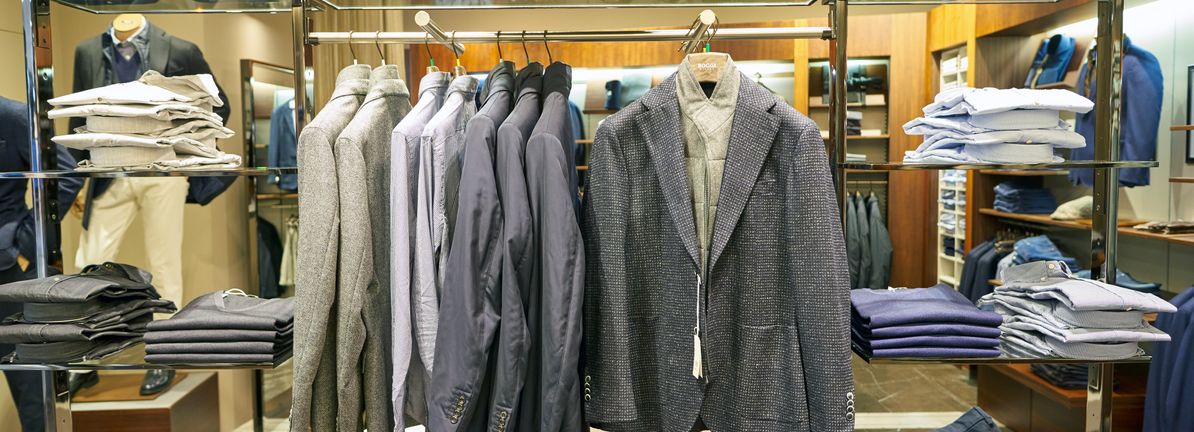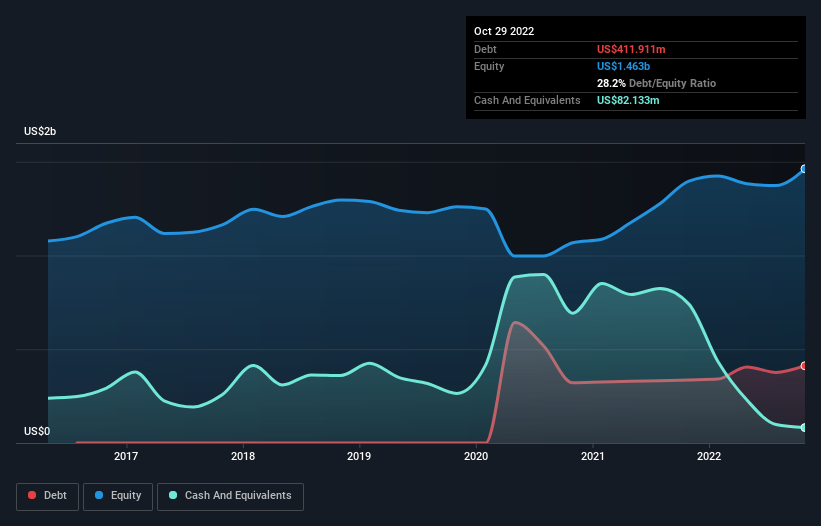
The external fund manager backed by Berkshire Hathaway’s Charlie Munger, Li Lu, makes no bones about it when he says ‘The biggest investment risk is not the volatility of prices, but whether you will suffer a permanent loss of capital.’ It’s only natural to consider a company’s balance sheet when you examine how risky it is, since debt is often involved when a business collapses. As with many other companies American Eagle Outfitters, Inc. (NYSE:AEO) makes use of debt. But should shareholders be worried about its use of debt?
When Is Debt A Problem?
Debt and other liabilities become risky for a business when it cannot easily fulfill those obligations, either with free cash flow or by raising capital at an attractive price. Ultimately, if the company can’t fulfill its legal obligations to repay debt, shareholders could walk away with nothing. However, a more frequent (but still costly) occurrence is where a company must issue shares at bargain-basement prices, permanently diluting shareholders, just to shore up its balance sheet. By replacing dilution, though, debt can be an extremely good tool for businesses that need capital to invest in growth at high rates of return. When we think about a company’s use of debt, we first look at cash and debt together.
See our latest analysis for American Eagle Outfitters
How Much Debt Does American Eagle Outfitters Carry?
You can click the graphic below for the historical numbers, but it shows that as of October 2022 American Eagle Outfitters had US$411.9m of debt, an increase on US$336.2m, over one year. However, it also had US$82.1m in cash, and so its net debt is US$329.8m.

A Look At American Eagle Outfitters’ Liabilities
According to the last reported balance sheet, American Eagle Outfitters had liabilities of US$685.4m due within 12 months, and liabilities of US$1.52b due beyond 12 months. Offsetting this, it had US$82.1m in cash and US$250.9m in receivables that were due within 12 months. So its liabilities outweigh the sum of its cash and (near-term) receivables by US$1.88b.
This deficit is considerable relative to its market capitalization of US$3.02b, so it does suggest shareholders should keep an eye on American Eagle Outfitters’ use of debt. Should its lenders demand that it shore up the balance sheet, shareholders would likely face severe dilution.
We use two main ratios to inform us about debt levels relative to earnings. The first is net debt divided by earnings before interest, tax, depreciation, and amortization (EBITDA), while the second is how many times its earnings before interest and tax (EBIT) covers its interest expense (or its interest cover, for short). Thus we consider debt relative to earnings both with and without depreciation and amortization expenses.
American Eagle Outfitters has a low net debt to EBITDA ratio of only 0.71. And its EBIT easily covers its interest expense, being 13.2 times the size. So you could argue it is no more threatened by its debt than an elephant is by a mouse. It is just as well that American Eagle Outfitters’s load is not too heavy, because its EBIT was down 56% over the last year. Falling earnings (if the trend continues) could eventually make even modest debt quite risky. There’s no doubt that we learn most about debt from the balance sheet. But it is future earnings, more than anything, that will determine American Eagle Outfitters’s ability to maintain a healthy balance sheet going forward. So if you’re focused on the future you can check out this free report showing analyst profit forecasts.
Finally, a company can only pay off debt with cold hard cash, not accounting profits. So we clearly need to look at whether that EBIT is leading to corresponding free cash flow. Considering the last two years, American Eagle Outfitters actually recorded a cash outflow, overall. Debt is usually more expensive, and almost always more risky in the hands of a company with negative free cash flow. Shareholders ought to hope for an improvement.
Our View
On the face of it, American Eagle Outfitters’s conversion of EBIT to free cash flow left us tentative about the stock, and its EBIT growth rate was no more enticing than the one empty restaurant on the busiest night of the year. But at least it’s pretty decent at covering its interest expense with its EBIT; that’s encouraging. Looking at the balance sheet and taking into account all these factors, we do believe that debt is making American Eagle Outfitters stock a bit risky. That’s not necessarily a bad thing, but we’d generally feel more comfortable with less leverage. The balance sheet is clearly the area to focus on when you are analysing debt. But ultimately, every company can contain risks that exist outside of the balance sheet. Case in point: We’ve spotted 3 warning signs for American Eagle Outfitters you should be aware of, and 1 of them can’t be ignored.
If, after all that, you’re more interested in a fast growing company with a rock-solid balance sheet, then check out our list of net cash growth stocks without delay.
Valuation is complex, but we’re helping make it simple.
Find out whether American Eagle Outfitters is potentially over or undervalued by checking out our comprehensive analysis, which includes fair value estimates, risks and warnings, dividends, insider transactions and financial health.
Have feedback on this article? Concerned about the content? Get in touch with us directly. Alternatively, email editorial-team (at) simplywallst.com.
This article by Simply Wall St is general in nature. We provide commentary based on historical data and analyst forecasts only using an unbiased methodology and our articles are not intended to be financial advice. It does not constitute a recommendation to buy or sell any stock, and does not take account of your objectives, or your financial situation. We aim to bring you long-term focused analysis driven by fundamental data. Note that our analysis may not factor in the latest price-sensitive company announcements or qualitative material. Simply Wall St has no position in any stocks mentioned.
Source link
